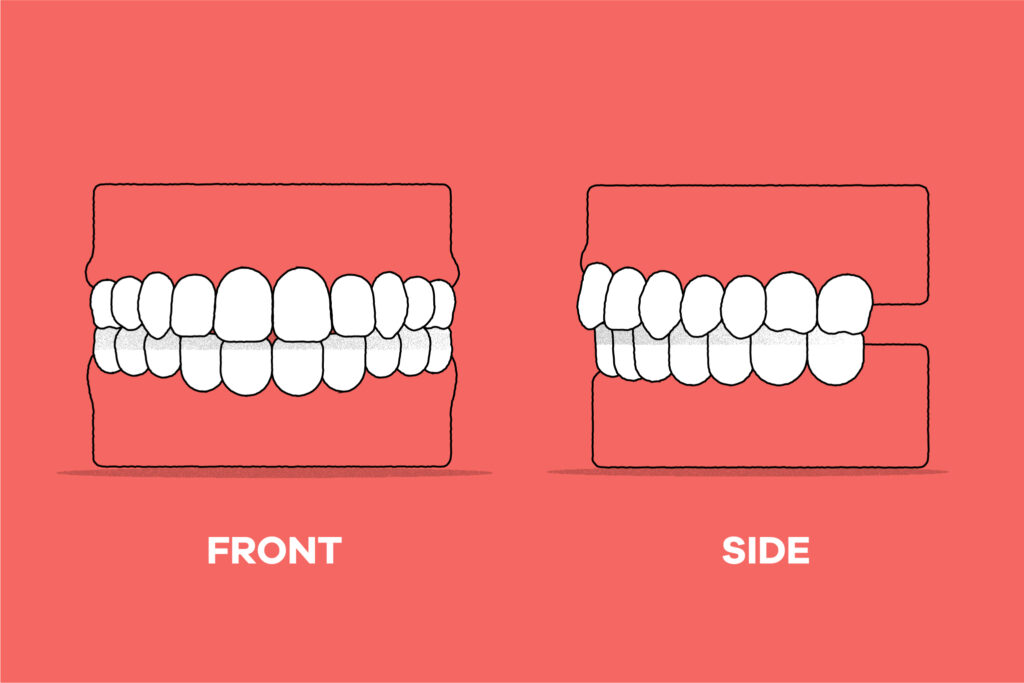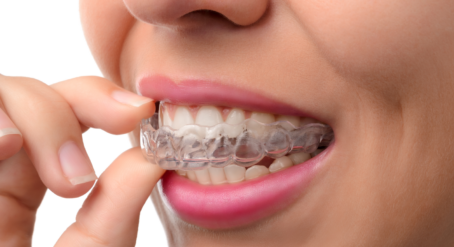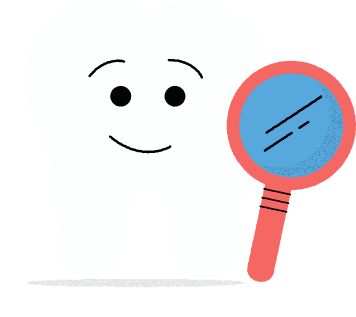Did you know that the resting position of your child’s teeth is important for a perfect, healthy smile? When your child isn’t chewing their food or smiling for school photo day, how their teeth rest when not in use might not be a thing they think about often (if at all).
But there are several issues that can arise from teeth that don’t rest properly, such as gum disease or excessive tooth wear. It’s important to teach your child (and yourself) how to work out if their teeth are resting naturally in a healthy way when not in use, so you can know when you need to take your child to an orthodontist.
What is a natural teeth resting position?

Simply put, when your mouth isn’t in use (like chewing), your teeth should be resting and not interacting with other parts of your mouth.
There are four main things you and your child should be aware of when assessing the resting position of their teeth:
- Your child’s tongue should be touching the roof of their mouth and sitting behind their front teeth.
- Your child’s lips should be relaxed and touching, rather than forcefully closed. Having to force lips closed is potentially an indication of misalignment.
- Your child’s teeth are not touching when their jaw is relaxed, like when they’re sleeping or idle.
- Your child isn’t experiencing any discomfort, such as straining or clenching.
Having a correct natural resting position is important for your child’s oral health. Improperly resting teeth are an indication of misalignment, a problem that will only worsen in time and possibly transition from mild discomfort to pain. This problem can also create a greater risk of wear – both to the teeth and jaw muscle, which can evolve into a more serious jaw condition if left untreated. And if your child can’t close their mouth properly, then they’re at higher risk of gum disease or trauma to the front teeth.
What is the perfect bite?
You might’ve heard of the perfect smile – but have you heard of the perfect bite? Having the perfect bite is just as important for your child’s oral health than their smile. A bad bite, or ‘malocclusion’, is quite common, and if left untreated can lead to excessive and uneven tooth wear, difficulty eating and joint and muscle imbalance. The perfect bite involves three key areas of the bite – the front, side, and arch.
- The front: The front is looking front-on, as if in a mirror. When your child clenches their teeth together, their top and bottom front teeth should overlap slightly. All the top teeth should the outside of all the bottom teeth.
- The side: On your child’s side, their teeth should lock in easily, like cogs in a wheel. The top teeth should sit just on the outside of the bottom teeth, so they fit snugly together.
- The arch: The arch is what you see when your child opens their mouth nice and wide, and you look at the top of your child’s lower teeth or the bottom of their upper teeth. From this angle, each tooth should be straight in the arc of the jaw and touching the one next to it, with no space in between.
Should top teeth overlap the bottom teeth?
There should be a 2–4mm overlap of the top and bottom teeth at the front of your child’s bite. When your child smiles, you should be able to see most of their bottom teeth (around 70% to 90%). But if you see any less of the bottom teeth, then your child might have a ‘deep bite’.
Your child’s top teeth should also be a little in front of the bottom teeth, and this type of slight overbite is normal. Though if their front teeth are behind the bottom teeth, your child may have an ‘underbite’ or ‘crossbite’. And if your child’s front teeth are too far in front, then that’s called an ‘overjet’.
If left untreated, these problems can do harm to your child’s teeth and overall oral health. Luckily, all these issues can be treated with the right orthodontic treatment.
Should your teeth touch when sleeping?
Even while sleeping, there should be no reason for your top and bottom teeth to touch. As mentioned above, the ideal resting position for teeth is totally non-interactive.
Teeth gnashing at night, which is also known as sleep bruxism, is when you clench or grind your teeth when sleeping. Treatments can involve massage, stress relief, mouthguards and medication depending on the cause and severity of the condition.
What about molars and wisdom teeth?
As the upper jaw sits slightly in front of the lower jaw, your child’s molars should (ideally) lock in place with the bottom molars like a puzzle piece. If the position of your child’s upper and lower jaw is correct, then molars should come together easily rather than rest on top of each other. The area they should be touching is the flattened area of tooth, not on the tips or inclines. Incorrect teeth alignment can cause your child to experience headaches, localised pain and excessive teeth wear.
If your child is in their late teens, then there’s a chance that their wisdom teeth might make an appearance. On the chance your child’s wisdom teeth do come through, sometimes there’s not much room for the wisdom teeth to come in properly. This means that your child’s wisdom teeth can negatively impact their other teeth (and bite). Your orthodontist will advise you if your child’s wisdom teeth are coming through and if they can be maintained or need to be removed.
Where does the tongue naturally rest?
When we think of posture, the tongue is probably not the first thing that comes to mind. But tongue posture is extremely important in making sure your child’s mouth remains healthy. At rest, your child’s tongue should sit behind their top front teeth and rests on the roof of their mouth, and this can help keep their bite and mouth healthy.
Are you concerned by your child’s teeth resting position?
Some resting issues can be indicative of larger problems – or may point to complex treatment needs down the track. Consulting a specialist orthodontist can help you understand if there is a larger problem at play regarding your child’s bite and the best way to proceed to safeguard their smile.
Use our Finder Tool to search for a specialist orthodontist in your local area and request a consultation.











